A Tale of Two Transitions
Why is the United States still pumping tens of millions per year into regime-change efforts that have proved to be a dismal failure?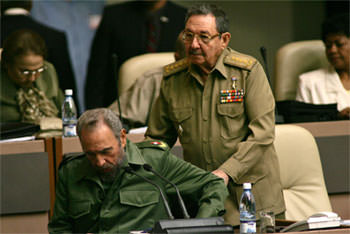
Editor’s note: Fidel Castro may be close to death, but his anti-American brother, Raul, is assuming control of a Cuba that has quietly made economic gains despite 44 years of U.S. sanctions.
Why, then, is the United States still pumping tens of millions per year into regime-change efforts that have proved to be a dismal failure?
An American documentary filmmaker who spent the last three years in Cuba digs at the truth from both sides of the Florida Straits.
This certainly wasn?t the way Fidel Castro imagined celebrating his 80th birthday on August 13th.
In the ideal version, the small island nation would have shut down to pay homage as its divisive autocrat began his ninth decade. From the peaks of Baracoa to the lush tobacco fields of Pinar del Rio, CDRs, political neighborhood watch groups sponsored by the Communist Party, would have organized large-scale gatherings to fete his new year. Hundreds of thousands of party members would have chanted, screamed and thrown their fists up in the Anti-Imperialist Plaza in the Vedado section of Havana. And Fidel himself probably would have topped off the fiesta by delivering one of his trademark seven-hour tirades extolling the virtues of the socialist state — a discourse that would all but cement his perceived immortality, commend his country?s increased economic position thanks to favorable trade terms from Venezuela and China, and vilify the bully 90 miles north that, through nine consecutive presidential administrations, has tried unsuccessfully to squeeze the Red out of his political machine.
To the surprise of Cubans on and off the island, the lead-up to Aug. 13 has been markedly atypical. Beginning in June, Cuba?s elite politburo effectively instructed the state-controlled media to officially announce Fidel?s 75-year-old younger brother, Raul, as successor. Then, late in the evening of July 31, Fidel Castro announced via the nightly news program, ?La Mesa Redonda,? that he would undergo serious surgery to alleviate intestinal bleeding. More important, during his recovery, he would temporarily cede power, and Raul would take over as El Jefe. In an uncharacteristic move that hints at the severity of his condition, Fidel has even pushed back his birthday celebrations from Aug. 13 to Dec. 2. While it benefits no one to place bets or revel in the potential timeliness or proximity of his death, the divergent and conflicting plans for transition and succession propagated from Miami, Washington, D.C., and Havana need to be scrutinized, now more than ever, to begin to gauge what the contesting visions hold for a struggling population of 11 million — and the last Communist country in the Western Hemisphere.
The United States? government unfettered zeal to unseat Castro and welcome democracy to Cuba has a fabled, near-cartoonish history that began in the wake of the Cuban Missile Crisis when the CIA undertook nearly 27 assassination attempts that ranged from an exploding cigar to a poisoned wet suit all the way to hitting the despot with the most potent LSD that Haight-Ashbury could manufacture. As the Cold War simmered, the U.S. government began to lose active, covert interest in eliminating Fidel. The successive administrations, both Republican and Democrat, remained resolute on placating Miami lobbyist groups by tightening sanctions on the island, presumably to suffocate the country into revolt. Gone, though, were the days of James Bond-style espionage and attempted murder.
In the waning hours of the Clinton administration, America?s attitude toward Cuba began to change once again. USAID, a governmental organization that, since the inauguration of the Marshall Plan, has assisted countries in developing democratic reforms, began funneling money to activist groups in Miami. Those groups in turn attempted to channel the grants to dissidents on the island. But it wasn?t until 2004 that the size of America?s assistance packages began to square with the intensity of its anti-Castro rhetoric.
Under President George W. Bush, the budget to hasten Castro?s demise has grown from $7 million to $36 million biannually (.pdf file). The group largely responsible for the dispersal of these monies is Assistance to a Free Cuba (CAFC), a Bush-established, State Department-administered organization aimed at bringing about democratic regime change in Cuba. To date, the majority of the funding has been allocated to the State Department, USAID and other government entities for the purposes of funding educational programs about democracy; fiscally propping up Cuban dissidents; eliminating illegal travel to Cuba by U.S. citizens; flushing out ?mules? that transport money to Cuban families; and supporting anti-Castro propaganda efforts.
However, the ineffectiveness of these programs (more on that later), has allowed Castro to categorize all the dissidents on the island as mercenaries — paid foot soldiers of the U.S. government and the Miami Mafia ? while at the same time lending credence to his claim that the U.S. stands on the brink of invasion at a moment?s notice.
And rather than backing off on these efforts, the U.S. seems determined to redouble them. Earlier this month, President Bush approved, upon the CAFC?s recommendation, a jaw-dropping $80 million every two years for efforts aimed at regime change in Cuba. Undeterred by a history of failure in Latin America in building democratic states, the Bush administration seems intent on continuing to pour money into a sinkhole that has already devoured nearly 50 years of effort and is likely to enable the Communist government to have its way in terms of power transfer.
Next page: Why has the U.S. spent almost $500 million on radio and TV programming that the vast majority of Cubans cannot receive?
Perhaps the best and most costly example of U.S. inefficiency in the fight for a democratic Cuba can be seen in Radio Marti and Television Marti. Founded in 1985 and 1990, respectively, and with station headquarters in Miami, Radio and Television Marti have sought to broadcast shortwave radio and satellite television to the Cuban people. The 150 full-time employees create crude news and original programming that vie to undermine Castro. The problem, though, is that hardly anyone in Cuba is tuning in.
Around the same time as the programs began, Castro undertook measures to ensure that they would be received by as few Cubans as possible: He installed a shortwave station on the same channel to muddle Radio Marti?s reception and actively jammed the signal of Television Marti. Even one of Fidel?s seven-hour ramble sessions is preferable to the static-filled noise that remains.
Statistically, Castro?s preventive measures seem to have paid off. In a 2001 study, the Board of Broadcast Governors surveyed a thousand Cubans to gauge the effectiveness of TV Marti. Of those queried, 997 had not watched it in the previous week. The same government organization performed a similar survey earlier that found that nine out of 10 Cubans had never even heard of TV Marti. One might suppose that these statistics would catch the attention of the CAFC, which would recommend the abolition of the money pit.
The CAFC, though, advised a contrary course, recommending a huge increase in funding to break the Castro regime?s information blockade — including the purchase of a $10-million plane designed to boost Television Marti?s signal. In all, according to a report in The Panama News, the U.S. has sunk nearly $500 million into Radio and TV Marti since their inceptions. The figure bears repeating: $500 million. Enough to film and market two Superman movies.
If, as is the case with network and cable television, budgeting and green-lighting for Radio and TV Marti were determined by Nielsen ratings, they would have been unceremoniously dumped quicker than the late Aaron Spelling?s one-off 1994 dud, ?Robin?s Hoods.? But government bureaucrats and Miami-based lobbyists seem content to pour more and more money into a failed vehicle that they hope, one day, will discover an audience.
Equally baffling was the CAFC?s recommendation to raise the budgets of Cuban-American nonprofits that seek to incite political change on the island. Its 2006 report specifies that $15 million should be given every two years to ?international efforts at strengthening civil society,? (i.e. U.S.-run nongovernmental organizations) and that $31 million should be allocated to the island to ?support independent civil society.? In total, it recommended spending just under $50 million over a two-year period to help dissidents raise their voices.
A number of problems immediately surface. Like the Marti networks, dispensing money to Cuban-American-run NGOs has proved historically ineffective. Washington-based groups like the Center for a Free Cuba receive around $400,000 annually from USAID alone, and often receive a similar amount from the loosely government-related National Endowment for Democracy.
A few months back, I had the opportunity to see how an anti-Castro NGO, Center for a Free Cuba, was spending its money. One of the heads of the organization made a visit to a nonprofit I was working with in New York City after my return from Cuba. A Bay of Pigs veteran who had not seen his homeland since that failed endeavor, he asked me a series of probing questions about my three years in Cuba that demonstrated to me that he had only the vaguest idea of what life was really like in his native land. I asked him about his organization?s propaganda activities; he removed from his bag a number of pamphlets and books on topics that ranged from children?s stories of living beneath a democratic system to the writings of Vaclav Havel translated into Spanish.
His favorite — as, admittedly, was mine — was a crude flip book comprising freeze frames that sequentially exposed Fidel?s mortality as seen through his now famous collapse in Santa Clara in 2004. I asked the man how many of these he had run off, and he said nearly 20,000. The problem with his organization quickly became as clear: By meeting?s end, he was inquiring whether I could help him deliver the counterrevolutionary trinkets to Cuba. If you?re asking a 20-something-year-old documentary filmmaker for help in running blockades, your business model isn?t all that solid.
I knew from my time in Cuba that that man?s problem was not an isolated one. In fact, it was symptomatic of the difficulties that USAID has encountered in financing NGOs focused on Cuba since the program modestly began in the mid-1990s. In its 2001 report to Congress on Cuba grant recipients, USAID reported that 13 of the 17 nonprofit NGOs encountered great difficulty in meeting their goals, thanks to the repressive environment in Cuba that prevents the dissemination of books like the one I was presented with last winter in New York. Given Castro?s tunnel vision for preservation of Communism on Cuba, this should be no surprise.
More intractable than the problems encountered by groups like the CFC are the harsh repercussions directed at dissidents on the island who receive money and supplies from the U.S. government. Although President Bush and Condoleezza Rice remain rhetorically resolute about their friendship with the Cuban people, especially the elusive ?civil society,? the kinship seems one-sided in its inability to listen to ?civil? friends like on-island dissident Miriam Leiva. In a 2004 dispatch to Salon.com, she argued that the money allocated to stir up dissent only ?serve[s] as evidence for the Cuban government to crack down on those who receive it.? In her opinion, accepting money from the U.S. government opens the door to accusations of mercenary acts, allowing Castro leeway for mass arrests. Perhaps with greater punch, Leiva charged that ?the majority of the money will stay in Florida — and we will go to prison.? After the most recent report was made public, she remained unmoved, reaffirming to the Chicago Tribune?s Gary Marx that ?the government is always looking for excuses to crack down on us.?
Indeed, interim successor and head of the armed forces Raul Castro recently made it clear that he had no time for mercenaries and Miami-rooted rabble rousing. On June 14, a month before the CAFC?s report landed on Bush?s desk and just under two months before Fidel Castro ?surprisingly? went under the knife, the younger Castro said in a speech that recent U.S. activities had confirmed in his mind that Cuba remained on Bush?s most-hungry-to-invade list. Raul?s proof? The United States?:
?increased backing of ultra-right groups of Cuban origin based in Miami? and ?the extended inciting of local mercenaries by the United States Interest Section [America’s quasi embassy] in Havana.? (link)
Next page: It has been widely rumored that Raul, given his uncharismatic nature and inability to sway public opinion like his older brother, will be forced to compromise on certain Communist policies to retain power; he may even need to court the assistance of the United States.
It should be of no surprise that the transition covertly planned by Fidel and his politburo will seek to strengthen the Communist Party, leaving no space for political diversification, a multi-party system or democratic elections. And while Cuba?s own succession plan places Raul as interim head of state, his power will not go unchecked.
Instead of being a full-fledged despot, the man who convinced Fidel Castro to turn toward Marxist policy will be kept in economic line by a troika of young hard-liners, including current Central Bank head Francisco Suberon, former personal secretary and current Minster of Foreign Affairs Felipe Roque Perez, and Vice President Carlos Lage. In addition, Ricardo Alcaron, the head of Cuba?s National Assembly (its quasi-Congress), is likely to emerge with a stronger presence. What unites all four men with Raul is their unflinching support of Fidel?s political machine, their opposition to the United States and their fondness for oppressive measures against those who attempt to exercise free speech on the island.
It has been widely rumored that Raul, given his uncharismatic nature and inability to sway public opinion like his older brother, will be forced to compromise on certain Communist policies to retain power; he may even need to court the assistance of the United States.
Over the years, he has been rumored to stray from dogma and act as a pragmatist. Numerous pundits in the United States have suggested that, in his effort to retain power, he will be forced to further liberalize elements of the country to allow for a Gorbachev-style perestroika and glasnost. However, this overlooks the fact that Cuba has been experiencing a tremendous amount of economic buoyancy from its dealings with other countries. Venezuela, for one, has given Cuba a boost with favorable trade terms and oil subsidies that result in nearly 90 billion barrels of crude annually. In exchange, Cuba assists Venezuela with healthcare and education, sending thousands of doctors and teachers to impoverished rural communities.
The deal seems to have paid off. According to a report issued by the Council on Hemispheric Affairs, the subsidies led to the May 2005 doubling of monthly salary for nearly 1.7 million workers, increased the standard of living and pensions for the elderly, and finally delivered on Castro?s dated promise of updated kitchen appliances. While it may seem trite to the First-Worlder, these small advancements mean the world to many Cubans residing in rural areas. Matched with increased investments from China in the nickel mines of Moa and Camaguey, the Cuban government has emerged from the dreaded post-Soviet Special Period with a new economic lifeline that makes the United States less integral to its future.
And even if Raul were to submit to liberal alterations in Cuba?s economy, it probably would not make much difference to either the Cuban-American activists in Miami or their representatives in Washington. According to the Bush doctrine, the end of the embargo is contingent on reforms no less sweeping than free elections, free speech, free press and the liberation of political prisoners. To many embargo proponents, there would be no substantive differences between a Fidel Castro- and a Raul Castro-led Cuba. And as long as Florida still holds the prize of 27 electoral votes, the policy against Cuba is not likely to waver.
Fidel has already claimed that the Communist Party itself will lead Cuba forward. If this is true and his model is followed, perhaps only an outright revolt would usher in true democratic reforms.
Shortly after Castro?s impermanent letter of resignation made headline news, Miami?s Little Havana was flooded with jubilant Cuban exiles, eager to rejoice in the immediate news that their nemesis was on his deathbed, if not already deceased. But this type of celebration will probably be short-lived. In the race to foster a post-Castro transitional government, America has stumbled throughout — funding ineffective democracy-building programs and paying heed to Miami-based activists at the expense of true democracy activists on the island. These pratfalls have allowed Cuba the leeway to sprint ahead. With an effective transition already underway on the island, it appears right now that, regardless of Fidel?s vital signs, U.S.-Cuba relations will proceed unchanged and the nearly 50-year rift between Miami and Havana will not be bridged.
Unless an unlikely insurgency rises on the island, history will record the 45-year-old embargo as the utter failure that it is. And amid this battle for the heart of the Cubans, the bullheaded politicians on both sides of the Florida Straits will continue to neglect the best interests of those they mean to help?the millions of people struggling to eke out a living on a repressed island.
Nicholas Shumaker was born in Detroit, attended Georgetown University and spent three years working as a documentary producer and journalist in Cuba before his residency was revoked in September 2005.
In 2004 Shumaker co-produced the documentary “Boxers and Ballerinas.”
He lives in New York City, where he works for Severance Pictures and is writing a book about his time in Cuba.
Your support matters…Independent journalism is under threat and overshadowed by heavily funded mainstream media.
You can help level the playing field. Become a member.
Your tax-deductible contribution keeps us digging beneath the headlines to give you thought-provoking, investigative reporting and analysis that unearths what's really happening- without compromise.
Give today to support our courageous, independent journalists.


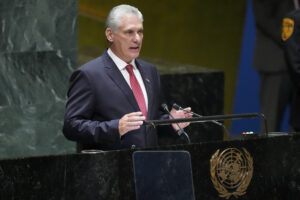
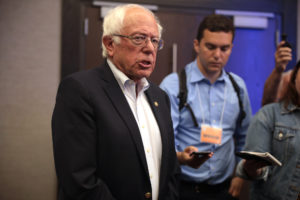
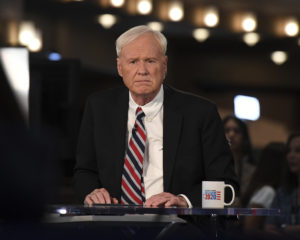
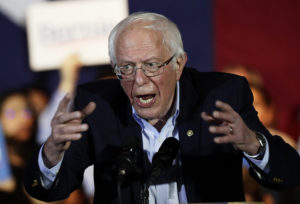
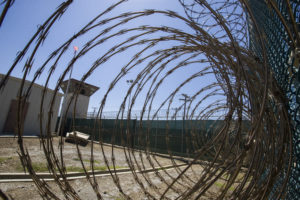
You need to be a supporter to comment.
There are currently no responses to this article.
Be the first to respond.